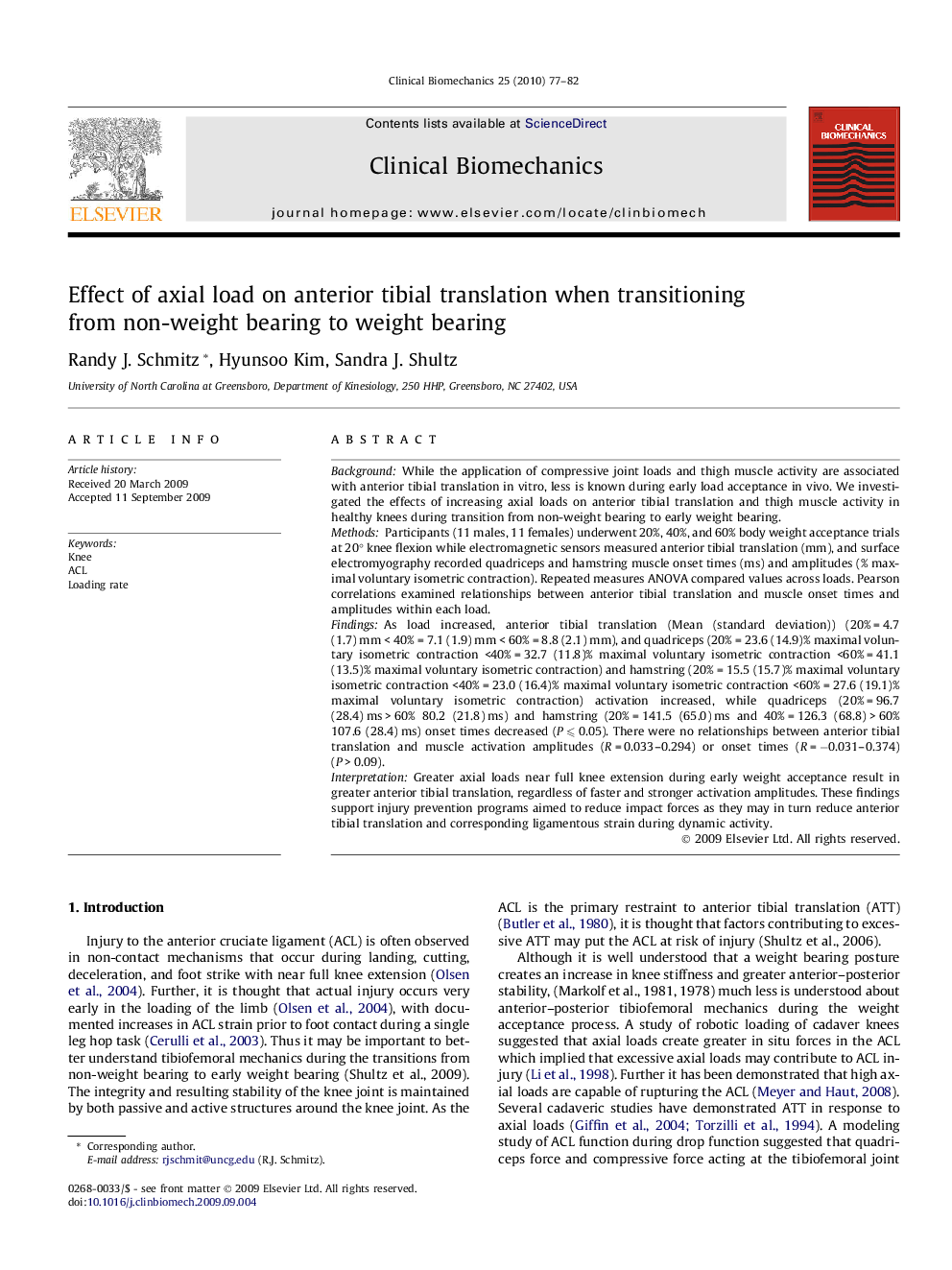| کد مقاله | کد نشریه | سال انتشار | مقاله انگلیسی | نسخه تمام متن |
|---|---|---|---|---|
| 4051153 | 1264977 | 2010 | 6 صفحه PDF | دانلود رایگان |

BackgroundWhile the application of compressive joint loads and thigh muscle activity are associated with anterior tibial translation in vitro, less is known during early load acceptance in vivo. We investigated the effects of increasing axial loads on anterior tibial translation and thigh muscle activity in healthy knees during transition from non-weight bearing to early weight bearing.MethodsParticipants (11 males, 11 females) underwent 20%, 40%, and 60% body weight acceptance trials at 20° knee flexion while electromagnetic sensors measured anterior tibial translation (mm), and surface electromyography recorded quadriceps and hamstring muscle onset times (ms) and amplitudes (% maximal voluntary isometric contraction). Repeated measures ANOVA compared values across loads. Pearson correlations examined relationships between anterior tibial translation and muscle onset times and amplitudes within each load.FindingsAs load increased, anterior tibial translation (Mean (standard deviation)) (20% = 4.7 (1.7) mm < 40% = 7.1 (1.9) mm < 60% = 8.8 (2.1) mm), and quadriceps (20% = 23.6 (14.9)% maximal voluntary isometric contraction <40% = 32.7 (11.8)% maximal voluntary isometric contraction <60% = 41.1 (13.5)% maximal voluntary isometric contraction) and hamstring (20% = 15.5 (15.7)% maximal voluntary isometric contraction <40% = 23.0 (16.4)% maximal voluntary isometric contraction <60% = 27.6 (19.1)% maximal voluntary isometric contraction) activation increased, while quadriceps (20% = 96.7 (28.4) ms > 60% 80.2 (21.8) ms) and hamstring (20% = 141.5 (65.0) ms and 40% = 126.3 (68.8) > 60% 107.6 (28.4) ms) onset times decreased (P ⩽ 0.05). There were no relationships between anterior tibial translation and muscle activation amplitudes (R = 0.033–0.294) or onset times (R = −0.031–0.374) (P > 0.09).InterpretationGreater axial loads near full knee extension during early weight acceptance result in greater anterior tibial translation, regardless of faster and stronger activation amplitudes. These findings support injury prevention programs aimed to reduce impact forces as they may in turn reduce anterior tibial translation and corresponding ligamentous strain during dynamic activity.
Journal: Clinical Biomechanics - Volume 25, Issue 1, January 2010, Pages 77–82